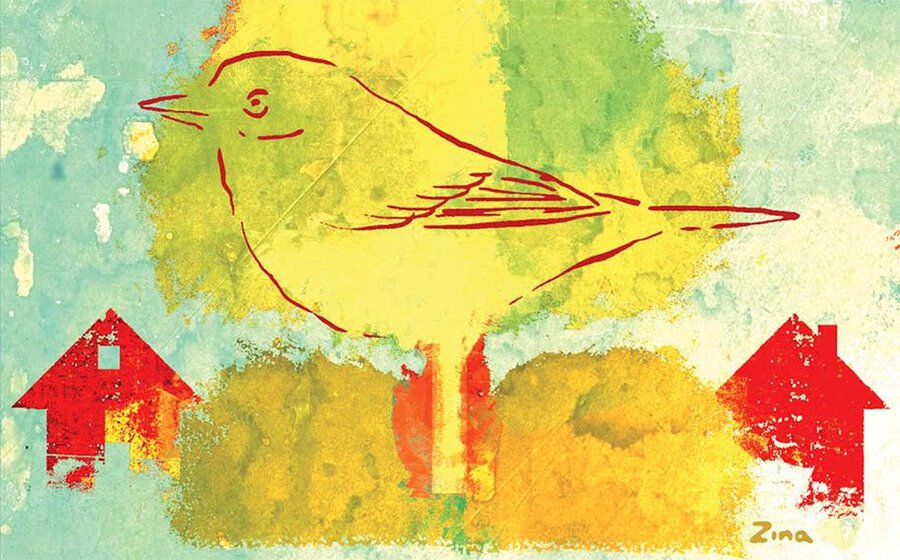The bird, the tree, and the takeover
Loading...
Dave and I were working hard at the house next door to ours. We’d chopped and hauled out most of the foundation plantings. It made an impressive heap, bristling with brambles. If you erected a monument to the vigor of plants you didn’t want in the first place, this is what it would look like. We had begun trying to persuade the vegetation toward our pickup truck when the new lady across the street stepped out of her car and had a look. “That’s quite a pile you’ve got there,” she said, with an uncertain smile that could have been of either admiration or apprehension.
“Isn’t it?” I said, flushed with effort. “I’ve been wanting to see that shrubbery gone for years. And the neighbors are going to be gone all week, so we decided to have at it!”
“Oh,” she said, smile faltering. It was apprehension for sure; possibly alarm.
I hastened to explain. “It’s all because of that bird!” I hollered over the chain saw, but she had already backed into her house.
We’ll never know the identity of the bird. Call it Bird Zero, because it got the whole ball rolling. More than 30 years ago some bird planted a cascara tree in the customary bird fashion, which is carelessly and with no regard to property lines. The tree is unattractive. It’s wedged between our house and the rental house next door, and it was never allowed to be as big as it wanted to be. It got whacked back without consideration for its personal health and has been allowed to remain alive only because the birds like it, and they’re attractive enough.
One year, a sweet young immigrant family of unknown extraction moved into the rental house, and we bobbed our heads at each other in a friendly way – we’d say, “Hey, hey,” and they’d say, “Ock, ock,” and so forth – but relations started to deteriorate when their yard began to fill up with old upholstered furniture, automobiles, metal debris, peculiar structures that weren’t up to anybody’s code, and ever more people, some of whom kept unconventional hours, loudly. We’re not the sort to rat on folks to their landlords or anything, but we’re not above putting up a big tall fence.
So we put up a big tall fence. Dave penciled it all out, but the cascara tree was in the way, so he fudged a little to the south to avoid cutting down the tree. After he got the whole thing built, he got out the tape measure, out of a nagging sense of responsibility, and discovered that we had just appropriated nearly two feet of the neighbor’s yard. His sense of obligation extended as far as the conviction that he should have known better and to feel bad about it, but not quite so far as to fess up.
The fence was real nice. Since the owners of the rental house lived way across town, we decided to keep quiet about it. Maybe our land grab wouldn’t be discovered until the house got sold. Ultimately we did the only proper thing we could do, which was to buy the house.
So it’s our rental now, and we’re well within our rights to tear out the shrubbery. One day we’re going to find out that we’ve been shorted a couple of feet, and we’re going to be mighty peeved at us.
But we do still have the ugly tree. The descendants of Bird Zero are working over the berries now; they’re planning to shake up the real estate market in another 30 years.





